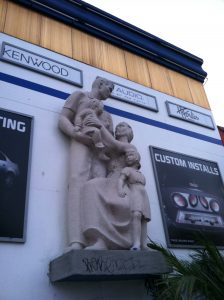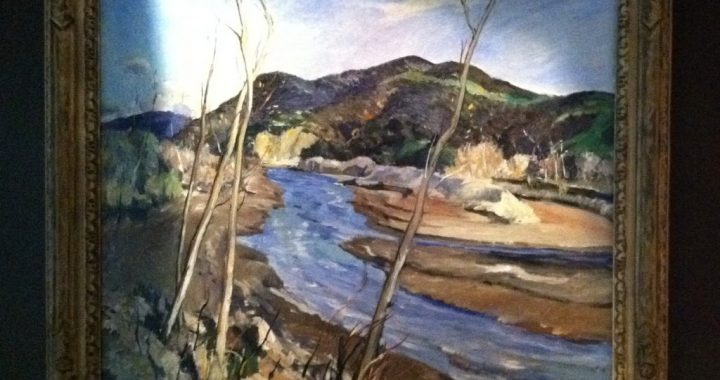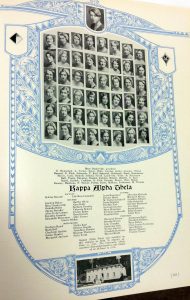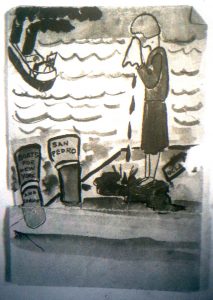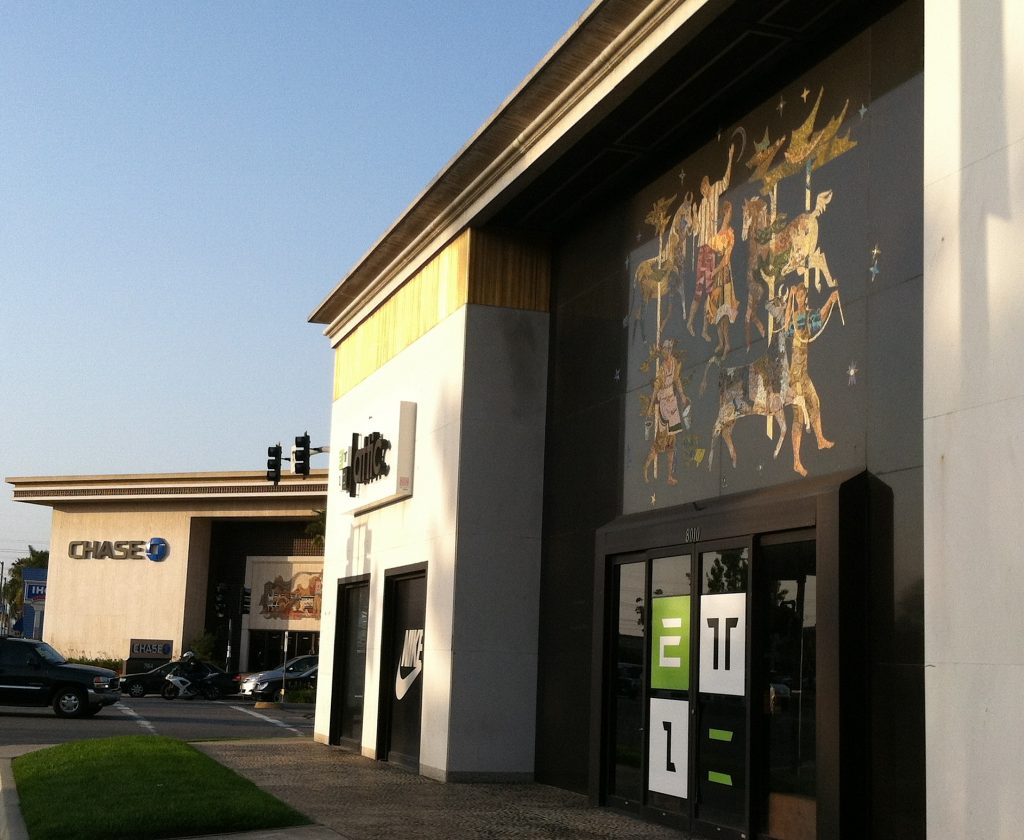
Millard Sheets (1950s and 1978) and Frank Homolka (1978), Buena Park branches at Las Palmas and Beach Blvd
This week I had the pleasure of discussing the Grand Central Art Center Millard Sheets Studio exhibit on the Creative Orange County radio show, alongside co-curator Wendy Sherman. Check it out — a 30-minute audio capsule of the history, artistry, and preservation work on the Home Savings banks, or head by the exhibit in Santa Ana in its last few weeks on display — Tony Sheets will be there Saturday night.
As I mentioned there, on my way back from the exhibit in early May I stopped at a number of Home Savings branches. I also drove right alongside Knotts Berry Farm to take this picture, of the two former Home Savings branches on two corners of Beach Boulevard and La Palma.
I have very little information about the first branch. From Eric Abrahamson, I know that Home Savings purchased the Savings and Loan Association of Anaheim in 1956, and that it came with Garden Grove and Buena Park branches (two of these buildings which fit an architectural model like the Compton branch). It seems sites for new branches were purchased in late 1958, with construction soon after — but, given the lack of detail in the Sheets Papers, it is possible the artwork for these branches was done elsewhere.
The larger second branch, across the street, shows a later style — the gold tiles are replaced with brown, and the branch sits diagonally across the corner, rather than snug and square like the first branch. Finished in 1978, it is a Frank Homolka design, with notes from Denis O’Connor, Sue Hertel, and others in the file describing the research of the Knotts Berry Farm themes and historical replicas, considered for inclusion.
I assume Home Savings built the larger branch because they outgrew the first one, but why build across the street? Why not build nearby, and have two branches? The branch at Pico and Doheny was built to handle overflow business from the 9245 Wilshire location in that manner, Bill Ahmanson Jr. told me. From a preservation standpoint, it is great they did not tear the first branch down, but it seems a peculiar business decision — as 7th and Figueroa and Lake & Colorado are branches that were torn down to make way for larger Home Savings towers, albeit at a later date.
Anyone who can help solve the mystery of two branches in Buena Park, please be in touch!


